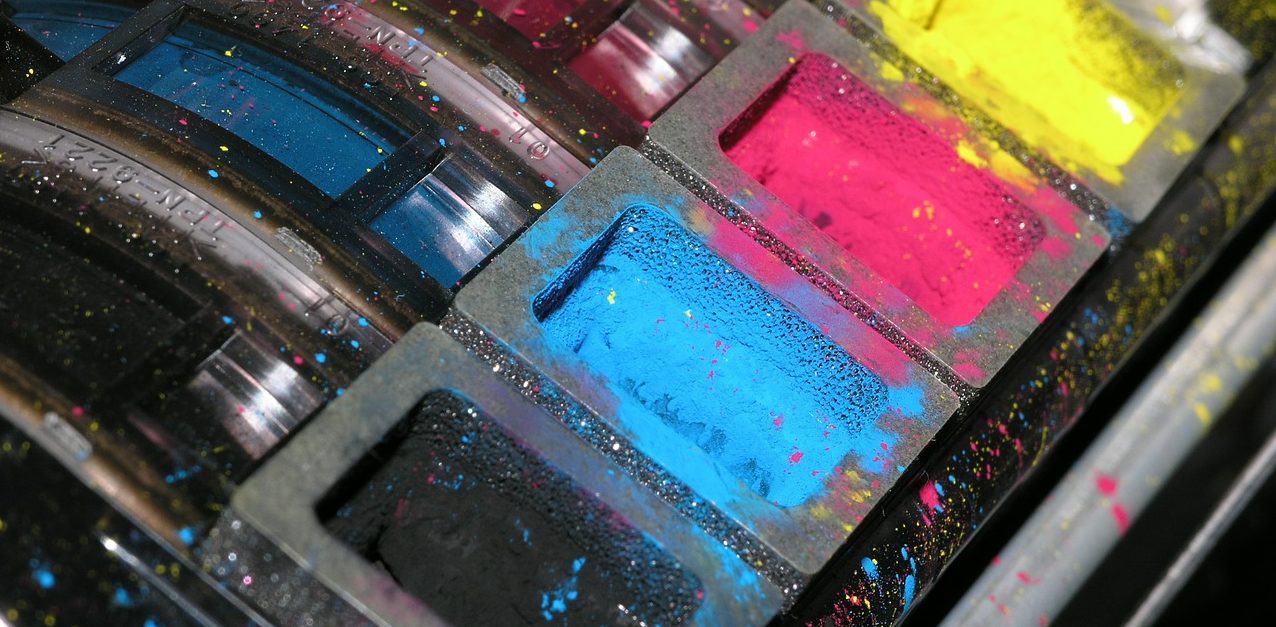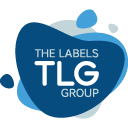
Most average label users don’t know much about the label printing process. They are mostly concerned about the visual aspect of their label and often don’t even think about label material or printing techniques. However, an uninformed and poor choice of label material (for example, unprotected paper for moist conditions) can make your overall product look unprofessional and cheap.
So, before ordering labels for your product, learn how to decide on the appropriate label stock and try to get familiar with different types of label printing. The most common printing techniques are digital, offset and flexo. Let’s take a look at the key the differences between, as well as the pros and cons of each technique.
Flexographic Printing
Flexo technique requires the creation of the so-called printing plates. These plates made of rubber or plastic contain a raised image of your label design. The surface of the plate is coated with fast-drying ink. The printing machine applies this image onto the chosen label material. Once the machine starts running, the printing process is very quick. It is possible to print thousands of labels in a short period of time.
Advantages of flexographic printing:
- Flexo printers are very speedy.
- Flexo printing eliminates the need for additional work and cost. The machine automatizes additional tasks that are most commonly needed on the label, such as die-cutting, lamination, etc. With other types of printing technologies, these processes are done on separate machines after the printing is completed, which requires additional time and manpower.
- Flexo printing can be used on any label material and it is known to produce labels of enhanced durability.
Disadvantages flexographic printing:
- Flexo printing is commonly used for large print jobs because the printing plates with designs that are needed in order to impress the image onto the label cost a certain amount of money. You need one plate for each color used on your label, so if you only need a few hundred labels, it won’t pay off to use flexo printing because of the initial cost of paper plates.
- Setting up the flexo printers takes quite a bit of time.
Digital Printing
Unlike flexo, digital printing doesn’t require any pre-printing preparation such as creating printing plates. Instead of having an image on the plates impressed on label stock, digital printers use toners that are applied in a thin layer onto the label material.
Advantages of digital printing:
- A smaller number of labels can be printed more quickly than with flexo printers since there is no initial setup.
- Flexo printers use at least a few paper plates with different colors. They can rarely be perfectly aligned, so the images can never be as sharp and finely defined as with digital machines.
- Color overlaps are common in flexo printing, which is not the case with digitally printed labels.
- It is much cheaper to print a small order (a few hundred labels, for example) with digital printers because there is no initial cost of printing plates.
Disadvantages of digital printing:
- If you need a lot of labels, you’ll learn that digital printing is not as affordable nor speedy solution as flexo or offset.
- Digitally printed labels as not as durable. They could be laminated for added durability, but that is an extra step and extra cost in the production.
Offset Printing
Offset lithography printing technology also requires printing plates which are usually made out of aluminum. They are not raised, but completely flat. It can be used for many types of materials, such as paper, vinyl, metals, cellophane, shopping bags, etc. The offset technique uses the CMYC coloring system, which means that the plates can only use these four colors: cyan, magenta, yellow and key (black). The label design is not impressed directly from the plate onto the label material. Instead, there’s another “medium” used in the process, so the ink is transferred from the plate to a rubber blanket and then to the label surface.
Advantages of offset printing:
- Offset printing technique allows a lot of flexibility with label material.
- It allows printing on both sides of the material, so the speed is relatively high.
- Offset is good for printing large runs: the price goes down as the number of labels goes up.
- It guarantees a consistent high quality of images.
Disadvantages of offset printing:
- Because of the initial setup costs, offset printing is not recommended for smaller label runs.
- The printing plates, being made from aluminum, are vulnerable to chemical oxidation which is why they need extra maintenance. This translates into additional time and manpower.
There are other printing methods, but these three are the most commonly used. Hopefully this overview will help you to choose the most appropriate method for printing labels. If you’re unsure about whether to use flexo or offset printing for your large label order, it is best to consult with our printing specialists who will readily advise on what is the best and most cost-effective printing solution for your needs.

